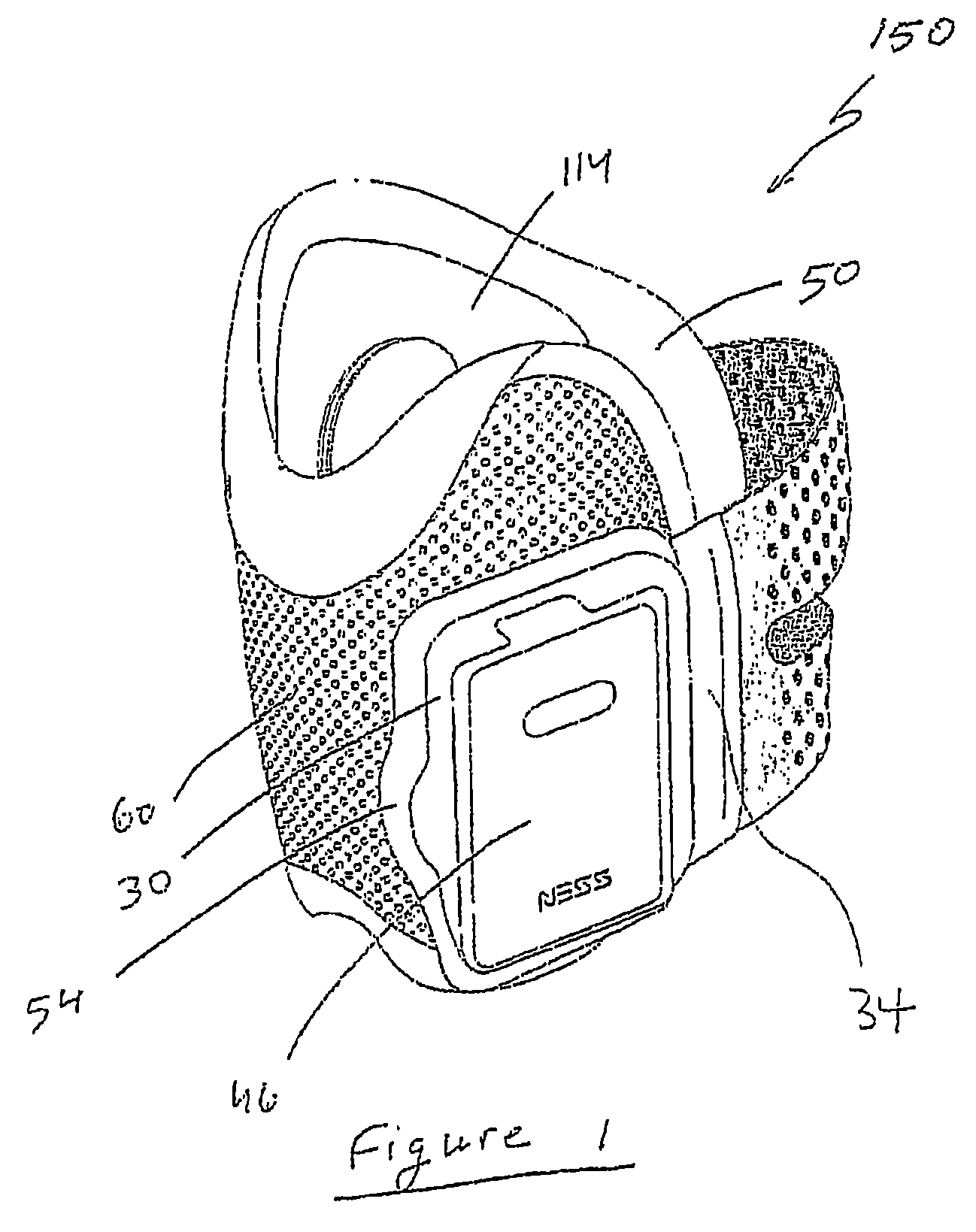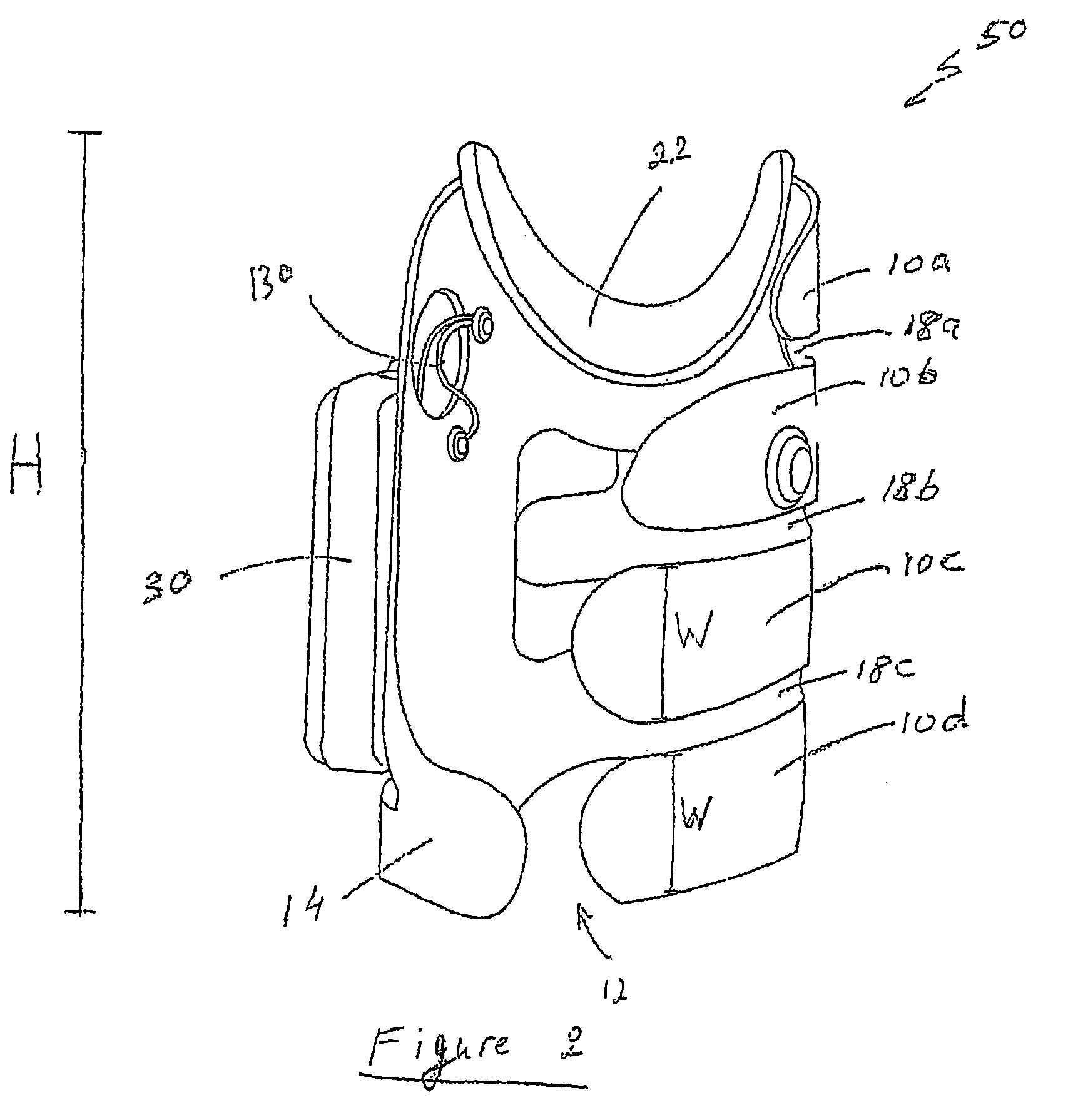Gait modulation system and method
a technology of gait and modulation system, applied in the field of gait modulation system and method, can solve the problems of reducing walking speed, affecting the normal functioning of hands or legs, and affecting the accuracy of gait modulation, so as to achieve the effect of precise and repeatable positioning of the layer
- Summary
- Abstract
- Description
- Claims
- Application Information
AI Technical Summary
Benefits of technology
Problems solved by technology
Method used
Image
Examples
Embodiment Construction
[0166]One aspect of the present invention is an improved electrical stimulation orthosis and method, and more particularly, a functional electrical stimulation (FES) orthosis for users suffering from gait problems such as drop foot. The orthosis can easily be donned on the leg, even by patients suffering from an impaired hand.
[0167]Before explaining at least one embodiment of the invention in detail, it is to be understood that the invention is not limited in its application to the details of construction and the arrangement of the components set forth in the following description or illustrated in the drawing. The invention is capable of other embodiments or of being practiced or carried out in various ways. Also, it is to be understood that the phraseology and terminology employed herein is for the purpose of description and should not be regarded as limiting.
[0168]Referring now to the drawings, FIG. 1 is a perspective view of the inventive FES gait modulation orthosis 150; FIG. 2...
PUM
 Login to View More
Login to View More Abstract
Description
Claims
Application Information
 Login to View More
Login to View More - R&D
- Intellectual Property
- Life Sciences
- Materials
- Tech Scout
- Unparalleled Data Quality
- Higher Quality Content
- 60% Fewer Hallucinations
Browse by: Latest US Patents, China's latest patents, Technical Efficacy Thesaurus, Application Domain, Technology Topic, Popular Technical Reports.
© 2025 PatSnap. All rights reserved.Legal|Privacy policy|Modern Slavery Act Transparency Statement|Sitemap|About US| Contact US: help@patsnap.com



